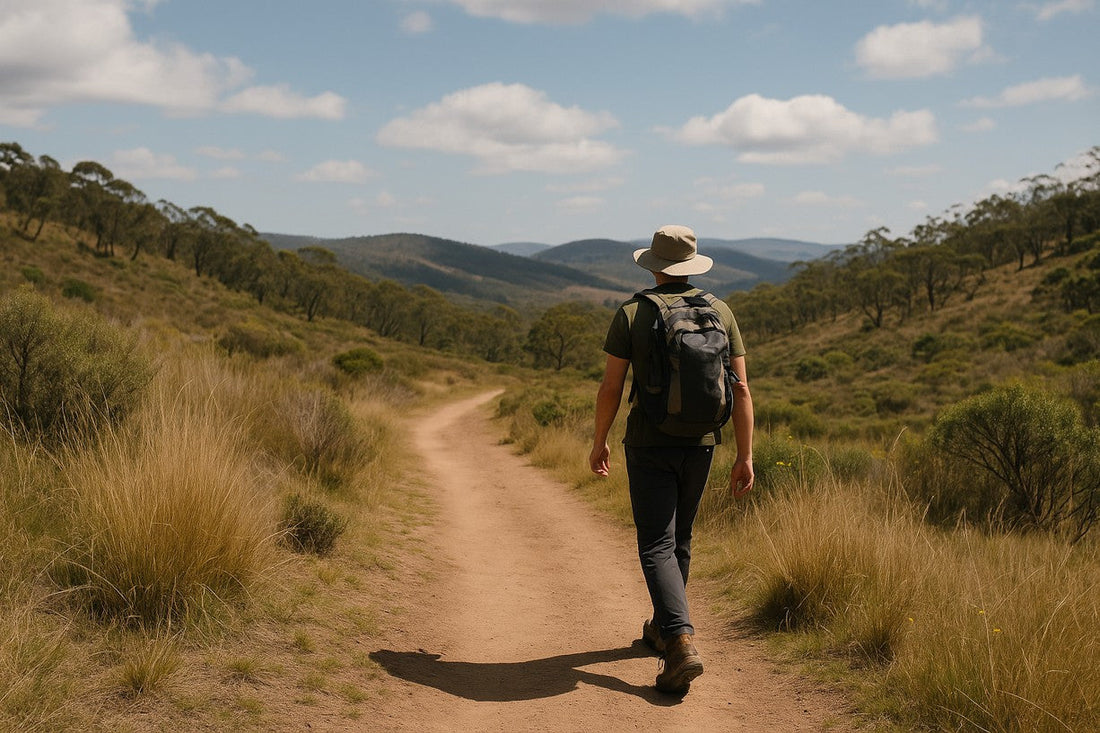
How to Choose the Right Hiking Pace and Avoid Overexertion
Share
How to Choose the Right Hiking Pace and Avoid Overexertion
Finding a sustainable rhythm on the trail.
We all know the feeling — that first burst of energy at the trailhead, legs fresh, pack snug, the bush wide open ahead. But go out too fast, and you might burn out before you even reach the first lookout. Learning to find your hiking rhythm — a pace that balances energy, breath, and enjoyment — is one of the most underrated trail skills, especially for group walks or longer days.
Whether you're hiking solo or with kids, here’s how to tune into the trail and avoid pushing too hard, too soon.
Quick Tips at a Glance
- Start slow and steady — warm up first
- Match your pace to the terrain
- Use breathing as your guide
- Pause with purpose (not just exhaustion)
- Consider the slowest hiker’s needs
- Adjust expectations — not every trail is a race
- Know the signs of overexertion
Start Steady, Not Strong
It’s tempting to charge out of the car and power through the first kilometre — especially on cold mornings. But your muscles need time to warm up, and your body needs to adjust to the weight of your pack. Start at a slower pace than you think you need, and allow your breathing and stride to settle.
Think of it like kindling a fire — a slow, steady start burns longer and brighter.
Let the Terrain Set the Tempo
Your pace will naturally change based on elevation, surface, and obstacles. A flat fire trail invites a quicker stride. A steep, muddy scramble? That calls for shorter steps, measured breathing, and more frequent rests.
The right pace is one that feels sustainable — if you’re gasping or your legs are burning after 10 minutes, it’s time to ease off.
Breathe Like You Mean It
Your breath is one of the best indicators of how hard you’re working. Try the "talk test":
- If you can hold a conversation comfortably — your pace is good.
- If you can only manage a few words at a time — slow down.
- If you're silent because you're conserving energy — you're probably pushing too hard.
Breathe in rhythm with your steps. Inhale for two strides, exhale for two. It sounds simple, but it helps create a calming cadence.
Rest Before You Need To
Taking breaks only when you're puffed and drained isn't ideal. Instead, pause periodically to drink water, eat a snack, or just enjoy the surroundings. Short, regular rests prevent fatigue from piling up and help you stay in tune with your body.
Even two minutes leaning on a tree can help reset your energy for the next climb.
Consider the Slowest Hiker
If you're walking in a group, especially with kids or newer hikers, let the slowest person set the pace. Nothing saps morale like feeling left behind. Check in with them regularly and take turns leading so everyone feels included.
This isn’t just about patience — it’s about making hiking enjoyable for everyone.
Rethink Distance Expectations
A 5km walk isn’t always “easy.” Factor in trail grade, surface, weather, and your current fitness level. Be prepared to change plans if needed. There’s no shame in turning back early, taking longer than expected, or skipping that last side trail.
The goal isn’t to finish fast — it’s to finish well.
Learn the Warning Signs of Overexertion
Keep an eye (and ear) out for:
- Rapid, shallow breathing
- Light-headedness or dizziness
- Nausea or cramping
- Complaints of tired legs, headaches, or heat
- Kids suddenly going quiet or sitting down without saying why
These are signs it’s time to rest, rehydrate, and reassess your pace. If ignored, they can lead to injury or heat exhaustion — especially on warm days or challenging trails.
Final Thought
Hiking isn’t a race. There’s no medal for finishing first — but there is deep satisfaction in walking at a pace that lets you take it all in. Birds, trees, conversations, and quiet moments aren’t found in the rush — they’re found when your steps match your breath and your breath matches the land.
So take your time. The bush isn’t going anywhere.